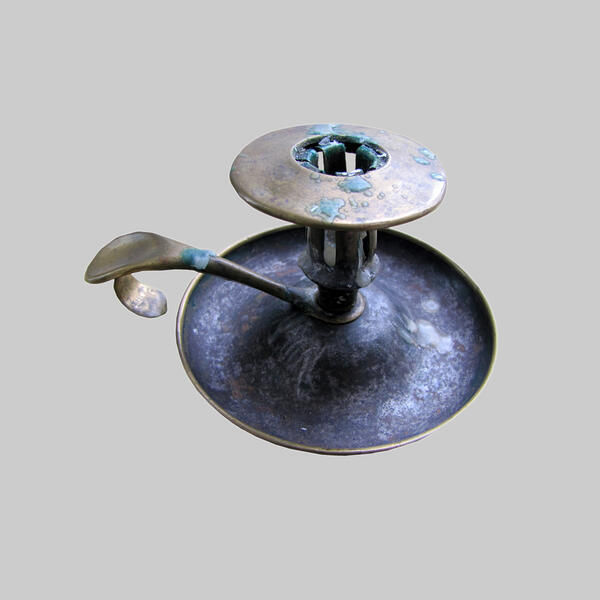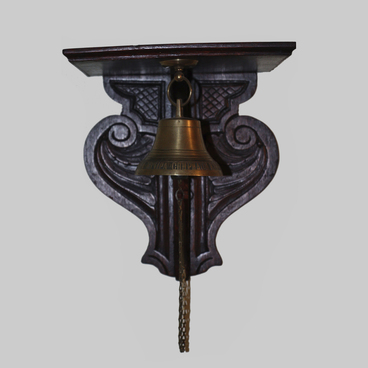This exhibit of the house-museum belonged to the cousin of Georgy Chicherin - Aleksey Chicherin, Doctor of Philology and Professor of Ivan Franko Lviv State University.
The 19th century craftsmen created a candlestick made of fire-resistant metal and brass. They soldered 6 vertical strips to the stand along a circle that forms a candlestick, and added a saucer-shaped pallet to the bottom of the structure where the wax dripped. Models with that improvement were popular because they allowed to keep the rooms clean. In addition, craftsmen have endowed the accessory with a handle for safer movement over long distances.
It is worth saying that over the past centuries, the issue of cleanliness in homes was significant not only because of soot but also because of candle drops. The thing is that artisans and manufactories made artificial lighting sources from animal fat or beeswax, which, when burned, ‘blackened’ things and stained the interior around.
In 1820, the sales of stearin candles began - brighter and less smoky. In the 1850s, paraffin and spermacet candles appeared on the shelves. Their inventors greatly simplified housekeeping and extended the life of many artifacts in modern museums, from grand pianos to tapestries.
Another milestone in the evolution of candlesticks is the details that reflect and diffuse the flow of light. Mirrors were attached to table specimens, and crystal pendants were attached to wall specimens.
Only the upper classes of society could afford candelabra to burn several candles at the same time. Commoners had to save even during the holidays.
It is noteworthy that in those years, the appearance of candles and related products strove for simplicity. Most of them were the same shape and size. For both the poor and the rich, these household items were not associated with territory decoration or status symbols.
Later, candlesticks began to correspond to current design trends. For example, at the end of classicism, that product could be in the form of an antique column or a half-naked girl with a torch in her hand.
The 19th century craftsmen created a candlestick made of fire-resistant metal and brass. They soldered 6 vertical strips to the stand along a circle that forms a candlestick, and added a saucer-shaped pallet to the bottom of the structure where the wax dripped. Models with that improvement were popular because they allowed to keep the rooms clean. In addition, craftsmen have endowed the accessory with a handle for safer movement over long distances.
It is worth saying that over the past centuries, the issue of cleanliness in homes was significant not only because of soot but also because of candle drops. The thing is that artisans and manufactories made artificial lighting sources from animal fat or beeswax, which, when burned, ‘blackened’ things and stained the interior around.
In 1820, the sales of stearin candles began - brighter and less smoky. In the 1850s, paraffin and spermacet candles appeared on the shelves. Their inventors greatly simplified housekeeping and extended the life of many artifacts in modern museums, from grand pianos to tapestries.
Another milestone in the evolution of candlesticks is the details that reflect and diffuse the flow of light. Mirrors were attached to table specimens, and crystal pendants were attached to wall specimens.
Only the upper classes of society could afford candelabra to burn several candles at the same time. Commoners had to save even during the holidays.
It is noteworthy that in those years, the appearance of candles and related products strove for simplicity. Most of them were the same shape and size. For both the poor and the rich, these household items were not associated with territory decoration or status symbols.
Later, candlesticks began to correspond to current design trends. For example, at the end of classicism, that product could be in the form of an antique column or a half-naked girl with a torch in her hand.



